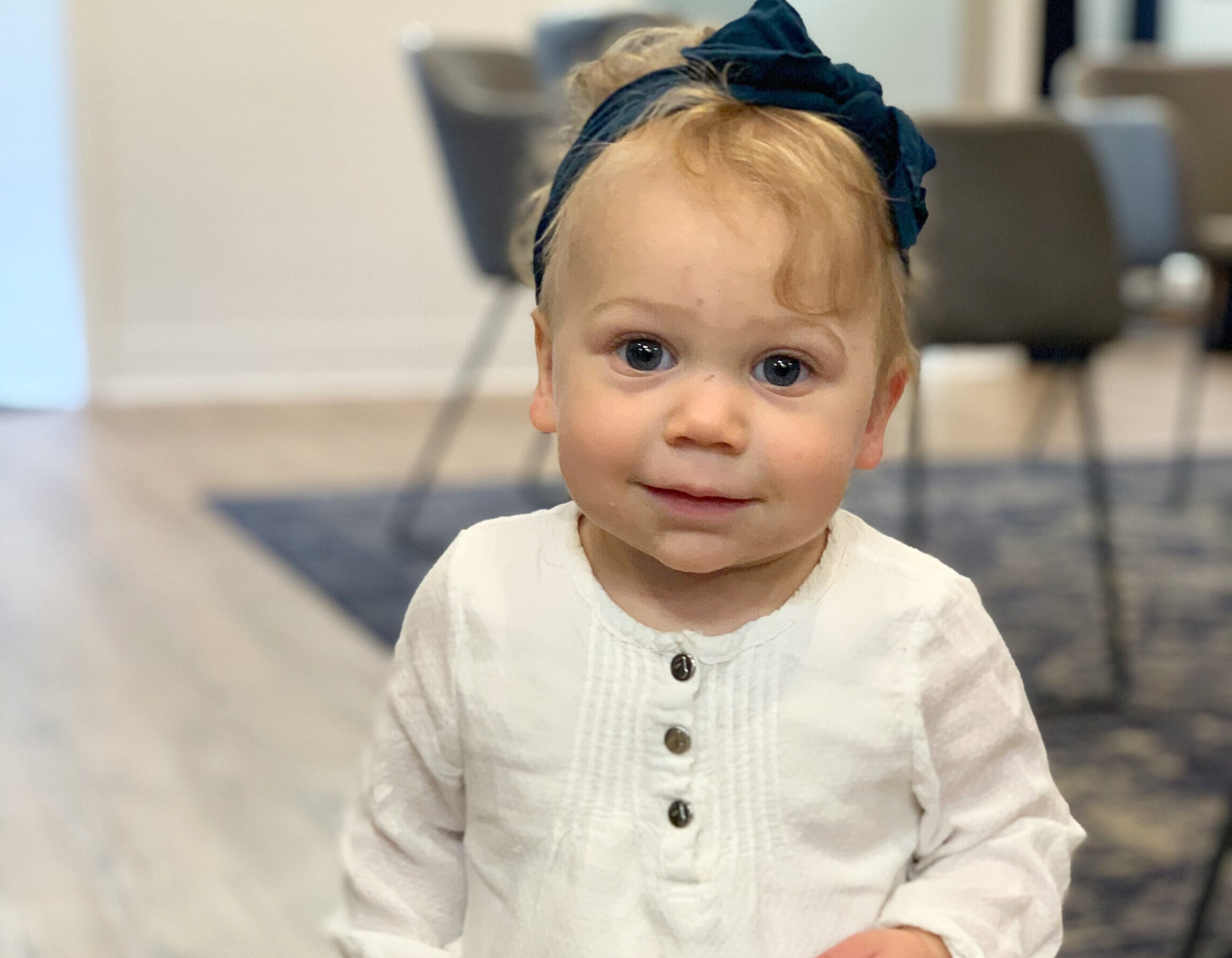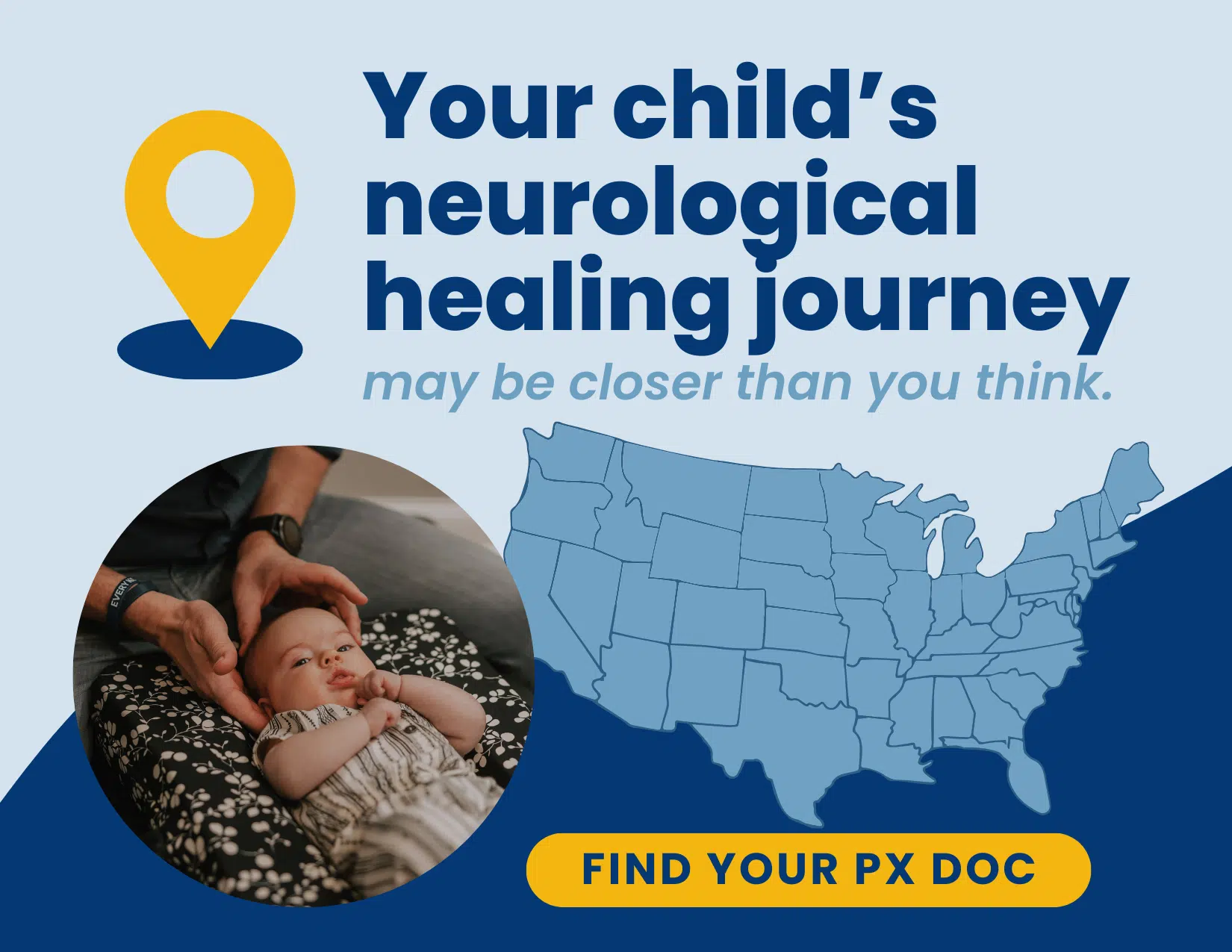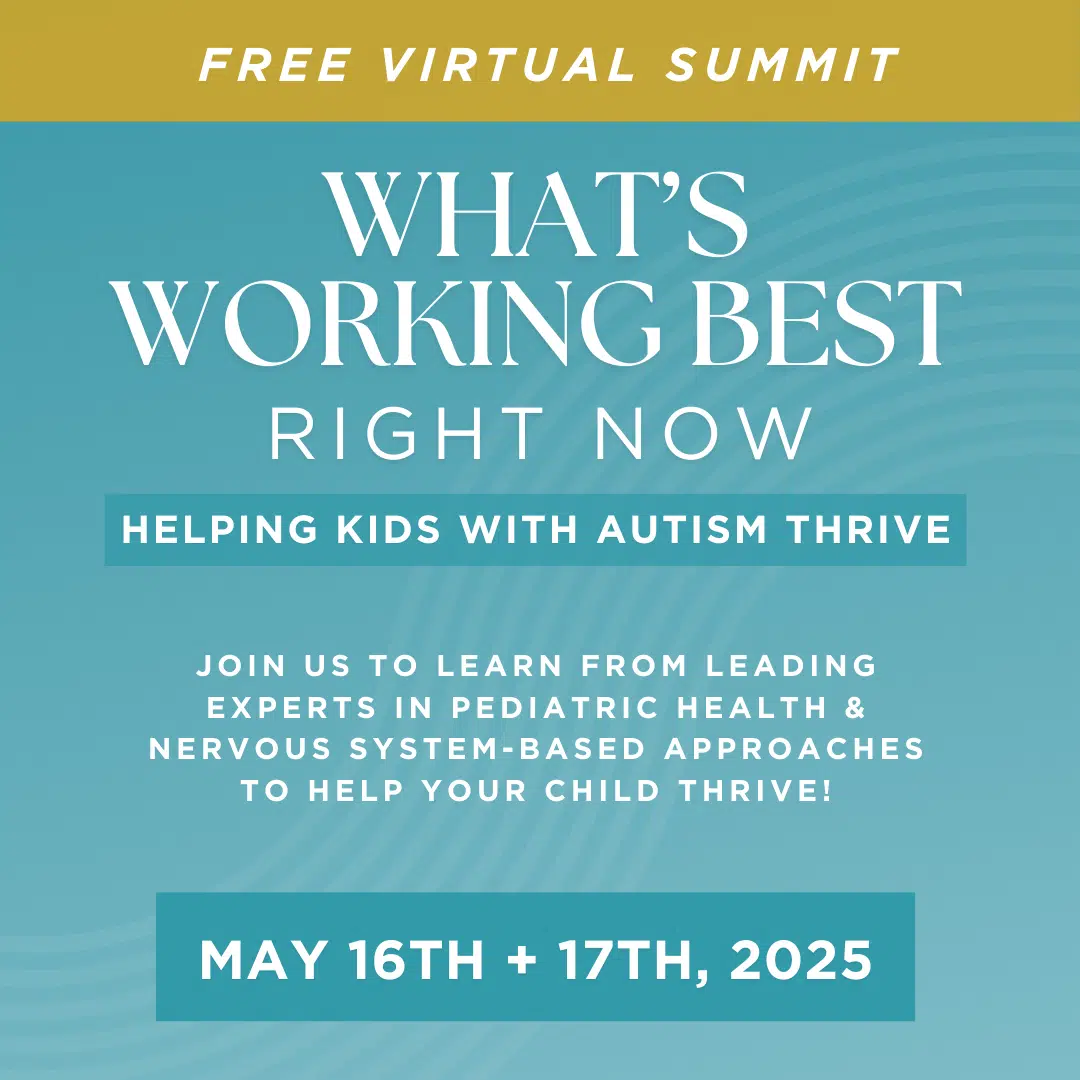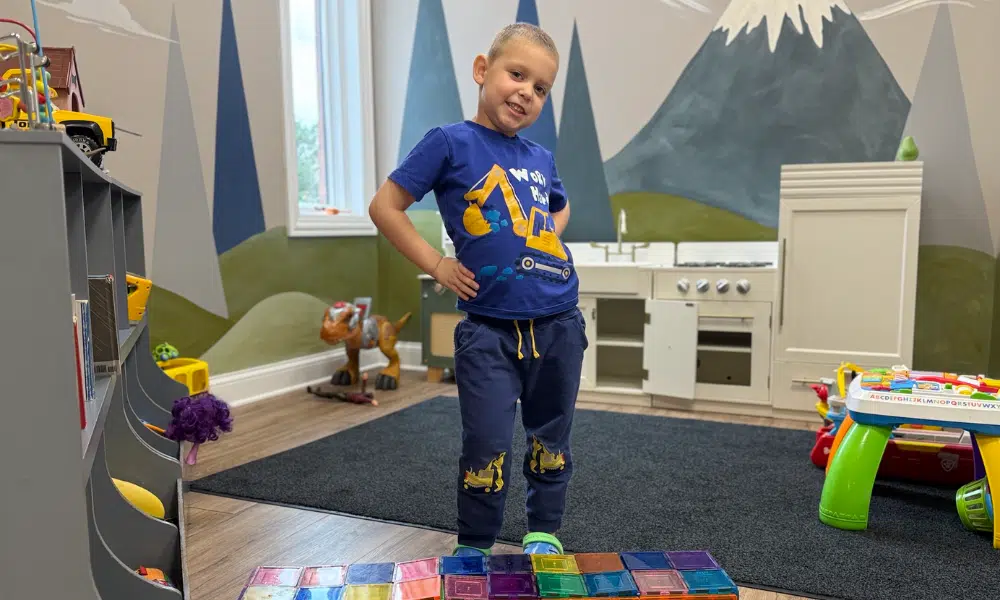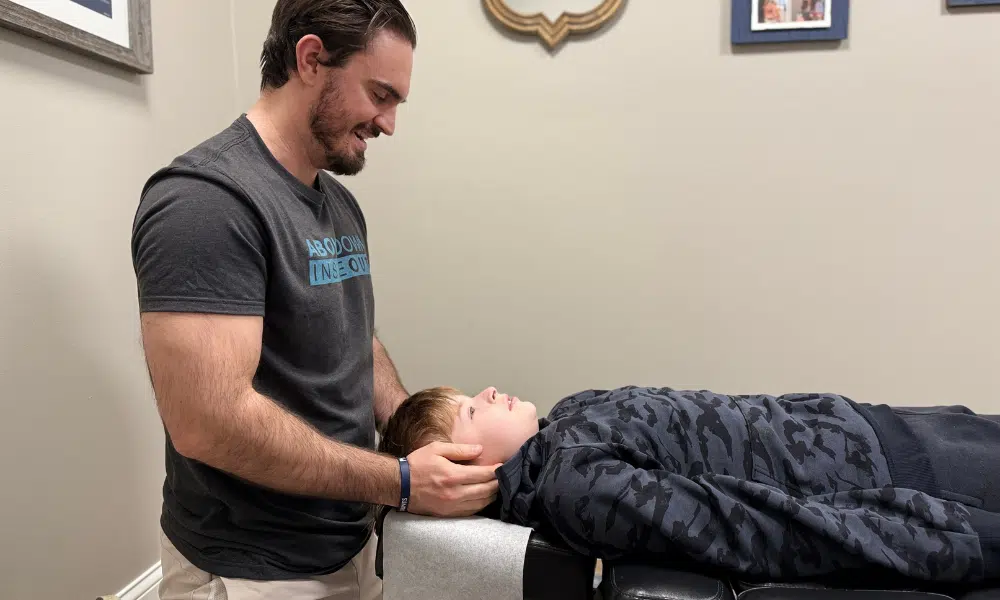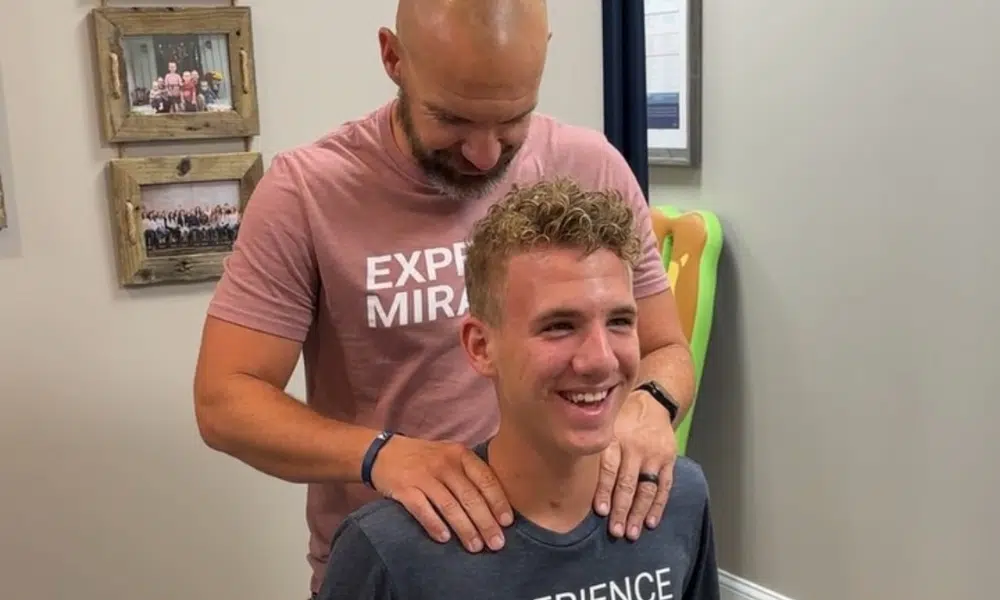As a parent, there’s nothing more worrying than watching your child struggle to breathe as you constantly check to ensure their little chest is still rising and falling. For those with babies born premature, respiratory issues and higher risks for developing severe RSV are a close reality.
RSV, or respiratory syncytial virus, is the leading cause of infant hospitalizations in the U.S., with an estimated 58,000-80,000 children under five hospitalized each year. For parents of premature infants, babies with underlying health issues, and any concerned parent wanting to protect their child, RSV is a significant source of anxiety.
Fortunately, there is a healthy and drug-free solution. In this article, we’ll share the knowledge and approaches needed to feel empowered and equipped to support your child’s health in the face of RSV. No parent should have to face this scary virus feeling helpless or alone.
What is RSV?
RSV, or respiratory syncytial virus, is highly contagious and infects the lungs and breathing passages. It’s the most common cause of two serious lung illnesses in infants and young children:
- Bronchiolitis: inflammation of the small airways in the lungs
- Pneumonia: infection of the lungs themselves
According to the CDC, nearly all children catch RSV at some point before they turn 2. The CDC also estimates that RSV leads to approximately 2.1 million outpatient visits and up to 80,000 hospitalizations in children under five each year in the United States alone.
For most healthy children and adults, RSV symptoms are relatively mild and mirror the common cold or a chest cold, typically including:
- Congested or runny nose
- Chronic cough
- Slight fever
- Sore throat
- Sneezing
- Mild headache
- Decreased appetite
However, in certain high-risk groups, RSV can lead to dangerous complications. Infants under six months old, children with pre-existing lung or heart conditions, older adults, and individuals with weakened immune systems are especially vulnerable.
In these cases, RSV can spread deep into the lower respiratory tract, causing the lungs’ tiny airways to become swollen and clogged with mucus. Breathing becomes difficult, and the body may not get enough oxygen. Hospitalization may be necessary for supplemental oxygen, suctioning of airways, IV fluids, and close monitoring.
Because hospitalization and medical intervention are so extremely stressful and traumatic for the child and family in both the short and long term, we’ll dive deep into the root cause and prevention of RSV in this article, as well as provide some natural options to help support the body’s own natural defenses and function when in a state of distress.
Can Adults Get RSV From Kids? RSV Season and Transmission
RSV season usually runs from fall through early spring, peaking in winter when indoor crowding allows germs to spread more quickly. Like the flu or a mild cold, the virus is highly transmissible through close contact with respiratory droplets.
While RSV is often manageable for otherwise healthy individuals, its potential to cause severe illness in high-risk groups, such as older adults, makes it essential for all parents to stay informed and vigilant. Recognizing the signs of RSV, understanding how it’s transmitted, and knowing when to seek medical care can significantly affect outcomes.
Recognizing RSV Symptoms
One of the most challenging aspects of RSV, the traits of children who have it, like a runny nose, often mimic those of a mild cold, especially in the early stages. This can make it difficult for parents to know if their child has picked up a routine bug or something more serious.
While only a medical professional can definitively diagnose RSV, there are sure signs you can watch for at home. With this knowledge, you can help identify potential RSV illness early and make informed decisions about your child’s care.
Most healthy children and adults who catch RSV will experience feelings similar to the common cold. In babies, however, the only noticeable signs may include:
- Irritability
- Decreased activity level
- Croup cough
- Trouble feeding
- Changes in breathing patterns
These milder symptoms typically show up 4-6 days after exposure to the virus and may last a week or two.
Sometimes, RSV can progress to a more serious lower respiratory tract infection when it affects the lungs and tiny airways. When this happens, inflammation can occur, making breathing difficult. Signs of severe RSV can include:
- Trouble breathing, such as fast, shallow, or labored breathing
- Small pink spots, known as RSV rash, on the chest and stomach
- Wheezing (a high-pitched whistling sound when exhaling)
- Flaring of the nostrils with each breath
- Grunting sounds when breathing
- Lethargy or extreme fatigue
- Bluish tint to lips, mouth, or fingernails
- High fever (especially in infants under 3 months)
- Dehydration (fewer wet diapers, sunken soft spots)
In severe cases, these signs peak around days 3-5 of the illness. This is often when medical attention may become necessary.
If your child has trouble breathing or any other more serious signs, it’s important to call your pediatrician immediately. They can assess if your child is getting enough oxygen and staying hydrated. Some children may need to be hospitalized for supportive care like IV fluids, suctioning, and breathing treatments. Swift medical intervention can help prevent the most severe complications.
Who is at the Highest Risk for Severe RSV?
While RSV can affect people of all ages, certain groups are more vulnerable to severe infection and complications. Understanding these risk factors is an important first step in safeguarding your child’s health.
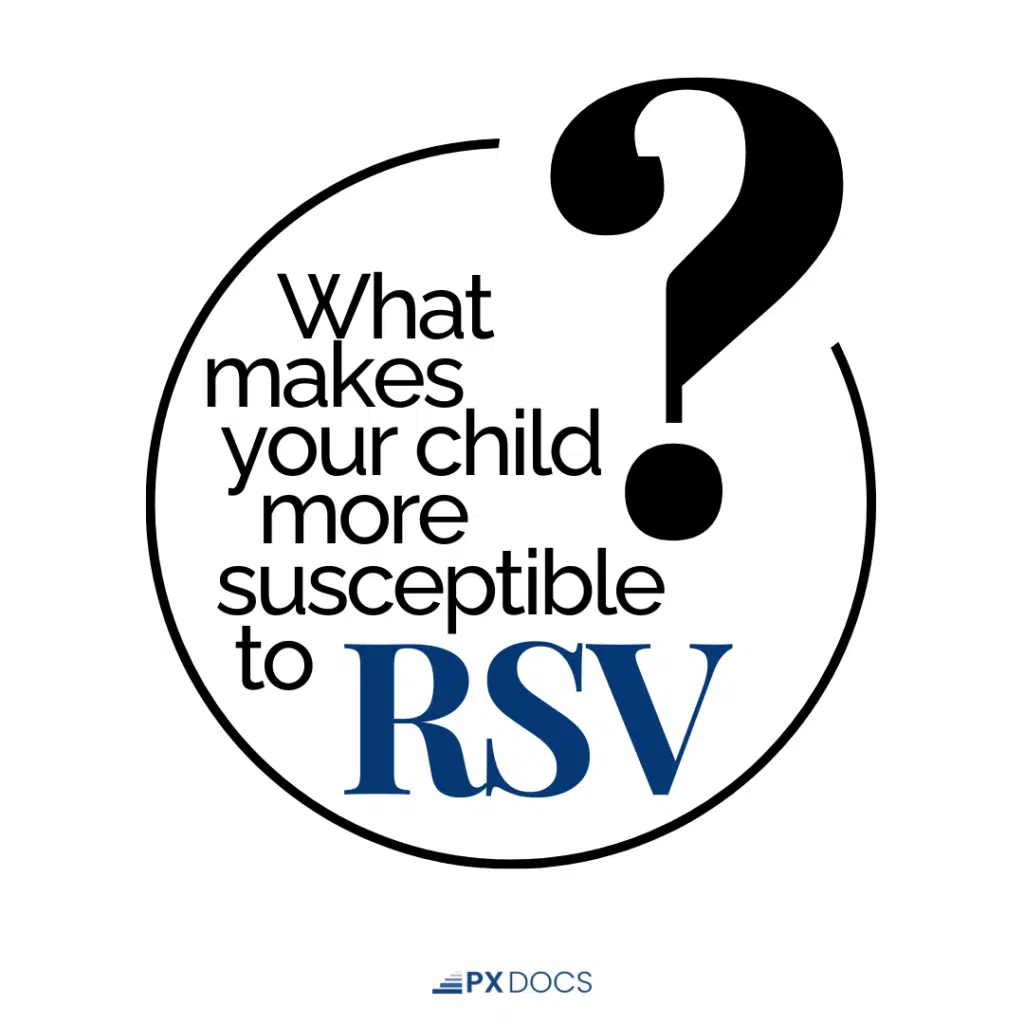
Premature Infants
Babies born before 37 weeks gestation are at increased risk for RSV complications, especially in the first 6 months of life. Preemies often have immature lungs, narrow airways, and a less developed immune system, making fighting off infection harder.
Infants 6 Months and Younger
Even full-term infants are at increased risk for severe RSV in the first few months of life. Their airways are still small and delicate, and their immune systems are beginning to develop specific antibodies.
According to the CDC, RSV hospitalization rates are highest for babies under 6 months old, at 20 per 1,000 infants.
Young Children with Certain Health Conditions
RSV can be particularly dangerous for children under 2 years old with chronic heart or lung problems like congenital heart disease, bronchopulmonary dysplasia, or cystic fibrosis. These pre-existing conditions make it more difficult for their bodies to handle the added stress of an RSV infection.
Children with weakened immune systems due to illness or medical treatments are also more susceptible to severe RSV. This includes kids undergoing chemotherapy, organ transplant recipients, and those with immunodeficiency disorders.
Older Adults and Immunocompromised Individuals
While we often think of RSV as a pediatric illness, it can also cause severe infections in seniors and those with compromised immunity. In fact, older adults account for an estimated 100,000-160,000 RSV hospitalizations each year in the US.
Conditions like chronic obstructive pulmonary disease (COPD), congestive heart failure, and immune-suppressing medications can increase the risk of RSV complications in these groups.
Environmental and Lifestyle Factors
Beyond age and health status, certain external factors can also influence RSV risk, including:
- Exposure to tobacco smoke and air pollution
- Attending daycare or having school-aged siblings
- Crowded living conditions
- Lack of breastfeeding
- Multiple young children in the household
- Malnutrition
While these factors are not always avoidable, knowing them can help you make informed decisions to minimize risk.
The Perfect Storm: Overlooked Neurological Factors and RSV Risk
Stressors during pregnancy and birth, such as maternal illness, interventions like c-sections, and antibiotic exposure, can all influence a baby’s developing nervous system and, in turn, their immune function. This “Perfect Storm” of factors can set the stage for increased vulnerability to infections like RSV.
At PX Docs, we recognize that the nervous system is the master control center of the body, regulating every function from breathing and heart rate to immunity and inflammatory responses. When the nervous system is balanced, it can mount a strong, coordinated defense against invading pathogens.
But what happens when the nervous system is thrown off balance? This is where the concepts of subluxation, dysautonomia, and nervous system dysregulation come into play.
But what causes subluxation and dysautonomia in the first place? At PX Docs, we refer to “The Perfect Storm” of physical, chemical, and emotional stressors that can overwhelm a child’s developing nervous system:
- Birth interventions like c-sections, forceps, and vacuum extractions that can strain the upper neck
- Early antibiotic exposure and side effects that disrupt the gut-brain axis
- Toxin exposures in utero and in early childhood
- Chronic stress and anxiety in the mother during pregnancy and fertility journey
- Poor infant gut health and microbiome imbalances
- And even physical traumas like falls or car accidents
While one of these factors alone may not cause a problem, combining them can create a domino effect of subluxation, dysautonomia, and lowered immune resilience.
How Pediatric Chiropractic Helps Kids Overcome RSV (PX Docs Perspective)
At PX Docs, we believe the first step in building a strong immune defense is addressing the root cause of vulnerability—and that starts with the nervous system.
While conventional medicine focuses on treating the symptoms of RSV and other illnesses, our Neurologically-Focused Chiropractic Care takes a different approach. We use precise adjustments to restore balance and optimal function to the autonomic nervous system, giving the body the tools it needs to heal itself.
Chiropractic adjustments aim to remove subluxations that interfere with healthy nervous system communication. Realigning and relieving irritation on the delicate nerve roots can help shift the body out of that “stuck” sympathetic fight-or-flight state and allow the parasympathetic “rest and recover” mode to kick in.
This is especially important in the upper neck and brainstem area, where the vagus nerve—a key player in immune and inflammatory regulation—is most vulnerable to subluxation. Fortunately, gentle adjustments in this region can have a powerful calming effect on the entire autonomic nervous system.
Preventing RSV: What Parents Can Do
While no prevention strategy is 100% foolproof, there are many proactive steps parents can take to reduce the risk and severity of RSV, especially for high-risk little ones. Here are some of our top recommendations:
Boosting Natural Immune Health
Beyond preventing exposure, there’s so much you can do to strengthen your child’s innate immunity from the inside out:
- Established research shows that mother’s milk is a powerful first line of defense against RSV
- Ensure a nutrient-dense, whole foods diet for older babies and children
- Supplement with immune-supportive nutrients like vitamin D, zinc, and probiotics
- Prioritize quality sleep and stress management
- Seek Neurologically-Focused Chiropractic Care to optimize nervous system and immune function
When you give the body the building blocks it needs to thrive, you’re laying a strong foundation for your child’s lifelong health and resilience.
Finding Your Family’s Path to Resilient Health
Navigating childhood illnesses like RSV is never easy, but remember—you are your child’s greatest health advocate. By arming yourself with knowledge, surrounding yourself with supportive practitioners, and focusing on building resilience from the inside out, you’re giving your child the best possible chance to thrive.
At PX Docs, we’re here to empower you on that journey. Our holistic, Neurologically-Focused Chiropractic Care approach to pediatric care is all about creating a strong foundation for your child’s lifelong health and wellness—during RSV season and beyond.
So if you’re ready to take a proactive stance for your family’s well-being, we invite you to visit our PX Docs Directory and find a pediatric chiropractor near you. Together, we can help you weather the storms of childhood and emerge stronger, healthier, and more resilient on the other side.

